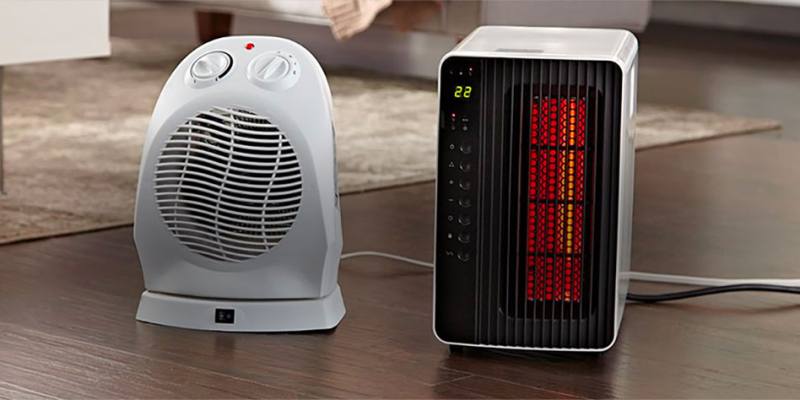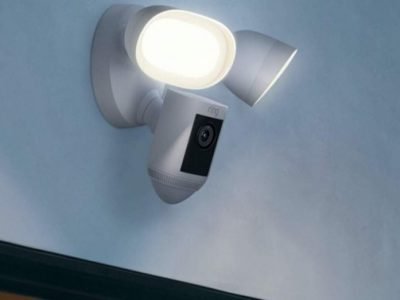When you live in a place where cold winters are a natural part of life, you need a way to warm up your living space. But keeping warm can be costly, inefficient, and challenging, especially when you do not know the best way to go about it.
According to data released by the US department of energy, over 50 percent of the average household’s energy bill goes into heating up and cooling down their house. So, the question is, is there any practical way of heating their home and saving on your bill?
The answer is: it depends on a lot of different factors. It depends on how the temperature is outside, how efficient the heaters are, how ample the space you are trying to heat is, et cetera. The situations can also vary per your need. So, there may not be only one heating method that can cover all your needs.
With half of your energy bill going to heating and cooling your home, it is worth considering the pros and cons of heating methods.so, let us examine the heating systems and their tradeoffs to see what is right for you.
The two most well-known heating options include electric/central heaters and space heaters.
Electric/Central Heater
A central heating system is the most popular heating system in the US. It is the warming system that is generally installed in most homes. It is used to heat all parts of your home. Central heating is usually powered by electricity or gas. However, in some regions, it is also powered by heating oil, coal, and wood.
It provides uniform heating across the whole room and is generally controlled by a centrally located thermostat. Keep in mind that electricity is the most expensive type of energy used and is the least economical option as they leave a huge carbon footprint.
When fuels such as natural gas or coal are used to produce energy, 70 percent of the fuel energy is lost during electricity conversion. Even more, it is lost while it is moving through the parts of your house. These types of heating units are also considered the least efficient. On the other hand, gas-fired are the most efficient, with rates ranging between 85 to 97 percent.
- PRIVACY PROTECTION*: Sensi won’t sell your personal information to third parties
- EASY DIY INSTALLATION: Use the built-in level and step-by-step app instructions for a quick...
- SAVE ABOUT 23% ON HVAC ENERGY*: The ENERGY STAR-certified Sensi smart thermostat can help you save...
- SMART MAINTENANCE: Sensi can help monitor the performance and efficiency of your HVAC system by...
- SIMPLE CONFIGURATION: Looks and feels like a thermostat. Has buttons and fits the same space as a...
- COMFORT COMES IN YOUR COLOR. Personalize your Wi-Fi Smart Color Programmable Thermostat to fit your...
- SAVE ENERGY AND GET REWARDED by checking with your energy provider about available rebates. Plus,...
- YOUR SCHEDULE. YOUR WAY. Flexible programming options for your schedule or utility company’s peak...
- EASY OPERATION AND INTUITIVE. Bright, easy-to-read touchscreen makes for simple operation.
- COMPATIBLE WITH: Forced air (gas, oil or electric), hot water and steam, and heat pumps with...
- Save Money: central heating systems, when used efficiently, can guarantee reduced bills all year round.
- Better for your Health: the central heating system helps prevent various health problems such as hypothermia, asthma, heart attack, and strokes. It also protects your household and belongings by reducing condensation, which is usually a big problem with space heaters.
- Help the Environment: central heaters lower the carbon dioxide emissions and help you help the environment.
- Low Maintenance: central gas heater emits only water and carbon dioxide and accordingly does not require regular maintenance such as cleaning.
- It requires suitable routes for pipes and ducts.
- The need for space to house the central heating unit.
- Limited control overheats output within each space as it does not come with separate thermostats for each part of your house.
- Limited flexibility to meet changing heating requirements.
- Has high installation cost ranging from $8-15000 for a small to medium-sized house.
- There is a time delay heat output is changed to meet heating demand.
Space Heater
Space heaters are small, portable heating devices. They may lack a transfer duct, but they run on the same energy sources as the central/electric heater. Space heaters may require a combustion mechanism or utilize electricity.
, Unlike a central/electric heating system, it only distributes heat into a smaller area. Modern space heaters come in a variety of sizes with different wattages. Combustion-based space heaters are the least Environment friendly and are a severe fire hazard. The combustion process may also release harmful gases within the air.
The most cost-effective space heaters are radiant or infrared heaters. It works by emitting infrared radiation towards the direction it is facing. They are usually smart devices and comes with safety features that prevent overheating.
It also comes with an automatic tip overturn-off feature, which prevents fire hazards. There are also convection heaters. These space heaters function by warming up the air in the room. Both space heaters and convection heaters fall under the same price range.
- 2 in 1 heater fan: This ceramic heater provides two heat levels, 1500W or 750W and one cool air fan,...
- Multi protection safety system: These heaters are made of flame retardant material avoiding any fire...
- Compact and powerful: 8.3 inch x 6.3 inch x 4 inch, 2.2 pounds Portable mini heater with build in...
- Quiet and fast heating: The noise this ceramic heater makes is lower than 45 decibels, quiet enough...
- Upgrade abs material: Upgrade abs material applied, which is more flame resident. The room heater...
No products found.
Knowing the pros and cons of using a space heater will help you decide where and when to use them.
- Efficiency: space heaters are typically efficient and heat the area quickly. There is no time delay as they are designed to heat small spaces, so you do not have to wait to get warm.
- Saves Money: space heaters are inexpensive relative to other heating equipment. These heaters are also energy efficient and cost about 10-15 percent an hour to operate. Using a space heater properly can be a great way to save money.
- Portability: as space heaters are designed to heat small areas, they are typically small and easy to move. Many even have wheels to roll them from room to room.
- Easy to use modern space heaters are elegant, user-friendly, and very easy to use.
- The Only Heat Small Spaces: space heaters are not designed to heat large rooms or be your primary heat source.
- Danger: according to the fire protection association, space heaters account for more than 40 percent of all house heating-related fires. Even though most of these fires can be prevented by paying attention and practicing safe use, many house owners think that space heaters’ potential hazards outweigh their advantages.
- They Require Constant Attention: while many modern space heaters are equipped with automatic shutoff units and much safer than the products in the past. But it would help if you still were cautious regarding where you place them. Never leave the heater on in an empty room. If you have children or pets that may accidentally bump or move the space heater, use extreme caution.
Difference Between Space Heater Vs. Electric/Centric Heater
Central/electric heaters are used to heat all parts of the house. On the other hand, space heaters only distribute heat into smaller areas rather than all rooms of your house. Electric heaters are highly effective and energy-efficient if you need to raise your whole house’s temperature by a significant amount.
However, it is inefficient and less effective if you only need a small space to be heated up. For that, you should use a space heater. It will save you money and prevent energy wastage.
Even though electric and space heaters generally use the same energy source (electricity), Electric heaters are costly regarding space heaters. Also, electric heaters operating correctly and efficiently are the safest, Environmentally friendly, and most cost-effective way to heat your home, unlike space heaters which are the least Environment friendly, dangerous, and a potential fire hazard.
Keep in mind that a space heater is not a replacement for your HVAC system. A space heater is a useful tool for limited, specific substances if used cautiously. When space heaters are used too much or improperly, they cause many problems.
Which One to Choose?
Several factors should be considered when it comes to picking up between a space heater and an electric/central heater. one involves the size of the space being warmed up.
Some people use space heaters, thinking that these would help bring down their energy cost. Space heaters are indeed a useful device, but they are not a practical option in every situation.
Use a space heater when you are using one room of the house and use an electric/central heater for warming the whole house. Space heaters do use less energy as compared to using electric heaters.
However, they are not as efficient as electric heaters.
When you purchased your heater is also a factor as newer models are more energy-efficient than the older ones.
Conclusion
Heating is an essential requirement with harsh weather and colder climate. Although it is difficult to cut down on heating and energy bills, you can reduce it a little by figuring out a heating method that works best for you and your specific situation.
Whether you have a small space or a large space to warm up, you can choose to use an electric heater or space heater or a combination of both.
If you only need to warm up one or two rooms in your home, then a space heater may be a more practical choice.
However, central/electric heaters would be a better option for harsher and colder climates and maintain constant heat or temperature throughout your house.
Hopefully, this article would help you figure out which method of heating is useful and help you decide which one to use.













Comments